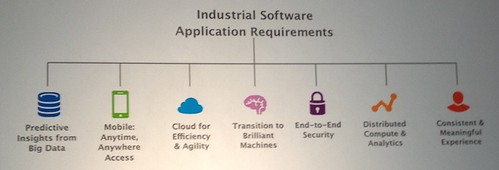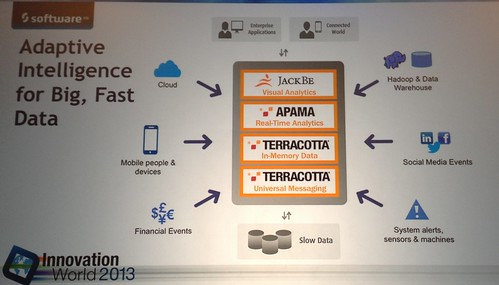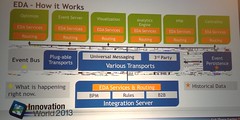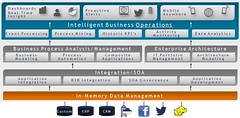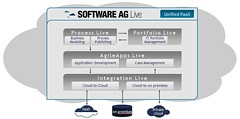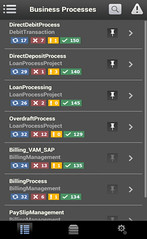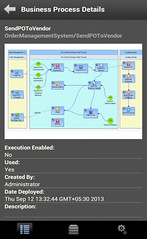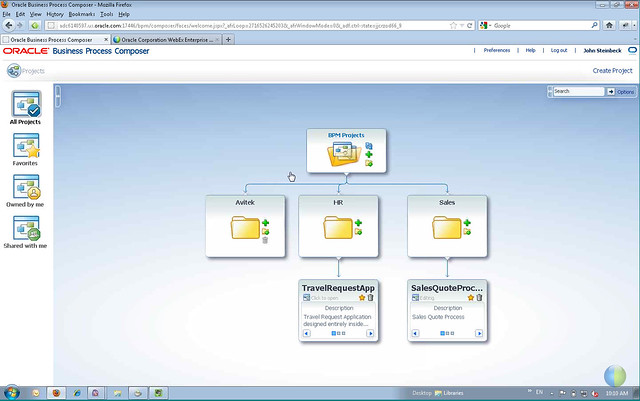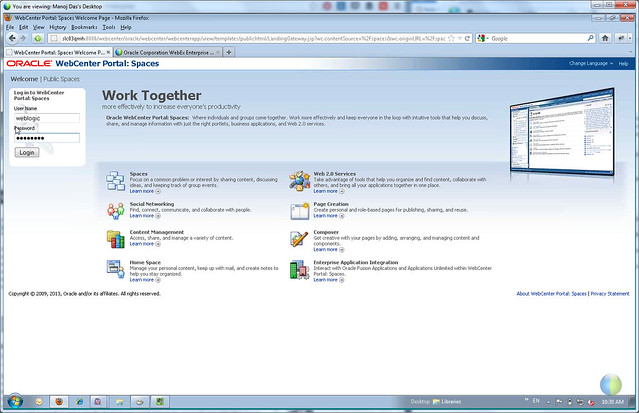Last day of Software AG’s Innovation World, and the morning keynote is Bill Ruh, VP of GE’s Global Software and Analytics Center, on how GE is becoming a digital business. He points out that part of that is what you do internally, but part is also your products: GE is transforming both their products and their operations on their transformation path. For example, their previous aircraft jet engines provided only aggregates measurements about takeoff, cruise and landing; now they have the potential to collect 1TB of measurement data per day from a two-engine aircraft. That’s really big data. Unfortunately, most data is dark: only 0.5% of the world’s data is being analyzed. We don’t need to analyze and act upon all of it, but there’s a lot of missed potential here.
His second point was about the “industrial internet”, where 50 billion machines are interconnected. We saw a revolution in entertainment, social marketing, communications, IT architecture and retail when a billion people were connected, but the much larger number of interconnected machines has the potential to virtualize operational technology, and to enable predictive analytics, automated and self-healing machines, mobilized monitoring and maintenance, and even increased employee productivity. Industrial businesses are starting to change how they get things done, in the same way as retail and other consumer businesses have been transformed over the past decade.
This flood of data is pushing big changes to IT architecture: industrial software now needs real-time predictive analytics, big data, mobile, cloud, end-to-end security, distributed computation, and a consistent and meaningful experience. Analytics is key to all of this, and he pointed out that data scientists are becoming the hardest position to fill in many companies. Behavioral changes around using the analytics is also important: if the analytics are being used to advise, rather than control, then the people being advised have to accept that advice.
The digital enterprise needs to focus on their customers’ outcomes – in their engine case, reducing fuel consumption and downtime, while improving efficiency of the operations around that machine – because at this scale, a tiny percentage improvement can have a huge impact: a 1% savings for GE translates to huge numbers in different industries, from $27B saved by increasing rail freight utilization to $63B saved by improving process efficiency in predictive maintenance in healthcare.
He had some great examples (speaking as a member of a two-engineer household, you can be sure that many of these will be talked about at my dinner table in the future), such as how wind turbines are not just generating data for remote monitoring, but are self-optimizing as well as actually talking to each other in order to optimize within and between wind farms. Smart machines and big data are disrupting manufacturing and related industries, and require a change in mindset from analog to digital thinking. If you think that it can’t happen because we’re talking about physical things, you’re wrong: think of how Amazon changed how physical books are sold. As Ruh pointed out, software coupled with new processing architectures are the enablers for digital industry.
It’s early days for digital industry, and there needs to be a focus on changing processes to take advantage of the big data and connectivity of machines. His advice is to get started and try things out, or you’ll be left far behind leaders like GE.

